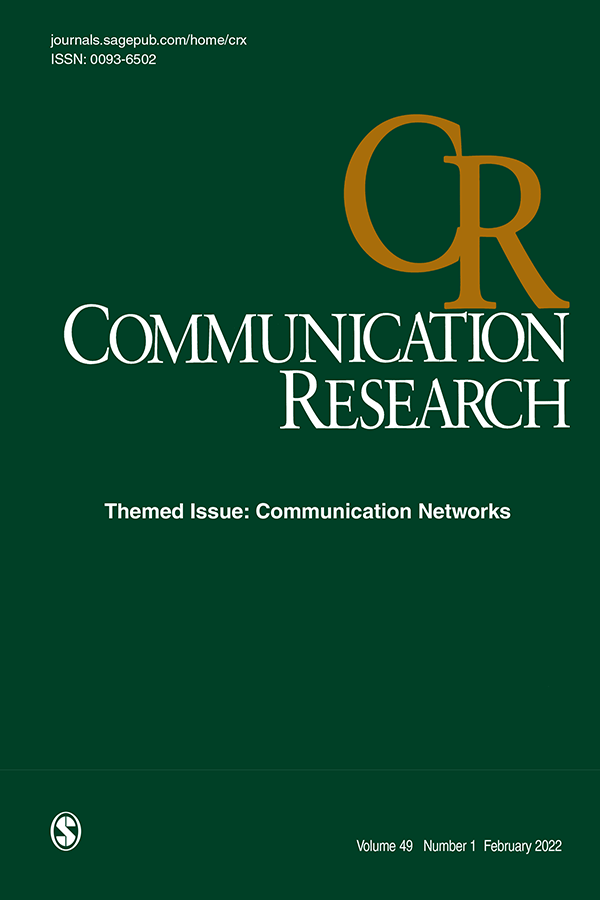人们重视专业知识吗?通过眼动追踪重新审视专业知识注意的假设和科学信息人际传播过程中专业知识线索的丢失
IF 3.2
1区 文学
Q1 COMMUNICATION
引用次数: 0
摘要
人们经常从各种来源了解科学,包括科学家、记者和朋友。许多研究假设人们对专家和非专家来源的关注程度不同。这一基本假设在很大程度上已经通过选择性暴露和阅读时间测量得到了验证。在研究1中,我们使用眼动追踪来测量注意力,发现个体对专家的注意力比非专家的注意力更多。研究结果很有希望,因为它表明人们可以区分专家和非专家信息。但在研究2中,我们发现专业提示不能通过连续繁殖在人与人之间传播。我们的研究强调需要使用新的方法来验证关于社会传播过程中注意和专业提示存在的关键理论假设。本文章由计算机程序翻译,如有差异,请以英文原文为准。
Do People Value Expertise? Revisiting Assumptions About Attention to Expertise via Eye-Tracking and the Loss of Expertise Cues During Person-to-Person Transmission of Science Information
People often learn about science from various sources including scientists, journalists, and friends. Many studies assume people pay different levels of attention to expert and non-expert sources. This foundational assumption has largely been tested with selective exposure and reading time measures. In Study 1, we used eye-tracking to measure attention and found that individuals paid more attention to experts than non-experts. The results are promising as it suggests that people can discriminate between expert and non-expert information. But in Study 2, we showed that expertise cues do not survive person-to-person transmission via serial reproduction. Our studies highlight the need to use new methods to validate key theoretical assumptions about attention and the presence of expertise cues during social transmission.
求助全文
通过发布文献求助,成功后即可免费获取论文全文。
去求助
来源期刊

Communication Research
COMMUNICATION-
CiteScore
17.10
自引率
0.00%
发文量
20
期刊介绍:
Empirical research in communication began in the 20th century, and there are more researchers pursuing answers to communication questions today than at any other time. The editorial goal of Communication Research is to offer a special opportunity for reflection and change in the new millennium. To qualify for publication, research should, first, be explicitly tied to some form of communication; second, be theoretically driven with results that inform theory; third, use the most rigorous empirical methods; and fourth, be directly linked to the most important problems and issues facing humankind. Critieria do not privilege any particular context; indeed, we believe that the key problems facing humankind occur in close relationships, groups, organiations, and cultures.
 求助内容:
求助内容: 应助结果提醒方式:
应助结果提醒方式:


